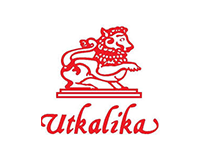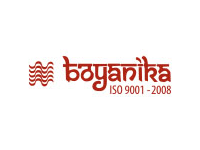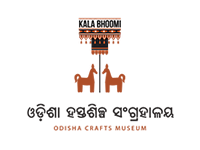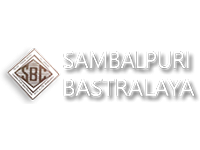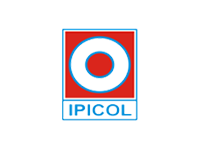Introduction
Government of India introduced a Health Package Scheme for Handloom weavers during 1992-93. This scheme intends to ameliorate some of the health problems related to the profession of handloom weaving. The package has several sub-components as outlined in Para-2.
Assistance is provided for the following under the Health Package Scheme.
- Reimbursement of cost of medicines and treatment of diseases, namely, T.B. Asthama and inflammation of alimentary system.
- Reimbursement of cost of testing of eyes and cost of spectacles.
- Supply of drinking water.
- Maternity benefit for women weavers/women in a weavers household
- Payment of additional monetary compensation for permanent measures of family planning.
- Infrastructure for primary health care.
The norms of payment are outlined in the subsequent paragraphs.
HEALTH MEASURES.
Medical Reimbursement.
Cost of medical expenses for weavers who are members of Handloom Societies/attached to Handloom Corporations would be reimbursed upto a maximum of Rs.1,500/- per weaver per annum. The medical treatment should be duly certified by a qualified medical practitioner of the State Government. The authority competent to sanction this would be the Director In-charge of Handlooms in the State. Such re-imbursement will be available for treatment of T.B, Asthama and inflammation of alimentary system only. However, if it is observed that any other disease qualifies to be related to the profession of weaving, cost of treatment of such disease may be reimbursed on special approval from the Development Commissioner for Handlooms.
Reimbursement of cost of testing of eyes and spectacles.
A handloom weaver may get his eyes tested in a hospital belonging to State Government/Central Government/Public Sector Undertaking or from a qualified optician/optometrist. The cost of reimbursement by Government would be limited to Rs.150/- for the cost of spectacles and Rs.40/- for the cost of testing. This reimbursement would be available only once in five years. In case, special eye camps care organised locally, the cost of such camps may be met out of this scheme @.Rs.40/- per weaver.
Supply of drinking water:
One bore well will be provided for every 50 Weaver households with a maximum expenditure of Rs.35,000/-. Where bore-wells are not feasible because of soil conditions, sanitary dug-wells may also be allowed, with the same cost norms. In case, the unit cost of a bore-well/dug-well is more than this the balance will have to be met by the State Government/local bodies.
Maternity benefit for Women:
A woman weaver or a woman belonging to a weavers household will be entitled to a lump sum grant ,of Rs.500/- per delivery, twice in her lifetime.
Compensation for sterilisation:
Monetary incentives at the rate of Rs.100/- per head, over and above the incentives given by other agencies will be paid to each handloom weaver/ his or her spouse, who undertakes permanent measures for family planning. Naturally this incentive will be available only once in the life time of the beneficiary. This benefit will be available for male weavers of the age of not more than 50 and female weavers of the age of not more than 45 years.
Infrastructure for primary health care:
In areas having a concentration of weaver population, funds will be provided from this scheme for permanent infrastructure for housing of Auxiliary Nurse-cum-Midwife (ANM) Centers, Rural Health etc. The assistance from the present scheme will be limited to Rs.1.00 lakh per center. This assistance will be used for setting up of buildings, cost of land, cost of electrification, water supply and purchase of equipment. This will be sanctioned subject to the condition that the medical department of the State Government undertakes to meet all recurring expenses, including, appointment of personnel and supply of medicines. A village, in order to be eligible to avail itself of this, must have a population of at least 150 weavers' households. While normally this would be available only for rural areas, under exceptional conditions, this scheme may also be available for urban areas. Preference will be given where the weavers provide part of the cost, particularly, by way of land or labour.
The facility to be supported would be limited to:
- Basic health care, immunization, preventive medicines and common ailments.
- Ordinarily specialised health care would not be supported unless they are specifically related to the profession of handloom weaving.
Funding :
The Health Package Scheme is being implemented as a 100% Central (Sponsored) Plan Scheme. However, the State Government is required to ensure equal investment from their own resources for the balance portion. For example, in case of a hospital, while the support from Government of India would be available for construction of the building, the State Government and handloom agencies would be expected to incur recurring expenses, including salaries of medical personnel and medicines
Each state Government would be required to submit a comprehensive detailed proposal and the office of DC(Handlooms) would sanction funds depending on the availability of resources, priorities and contribution proposed by the State Governments. Funds for this will be available from the budget head of Welfare Package Scheme. Funds from this budget head would be released first on priority basis for the other two Welfare Schemes, namely, Thrift Fund Scheme and Group Insurance Scheme, while release for Health Package would occupy second priority. This prioritisation is proposed because commitment under Thrift Fund and Group Insurance Schemes would be on a continuous basis.
The directorate of Handlooms, while submitting proposals, must clearly indicate the implementing agencies and other operational details. Besides covering weavers affiliated to Corporations and Cooperatives, weavers outside their affiliation should be covered, particularly through the field agency of Directorate of Handlooms.
In respect of sanction of hospitals, before the scheme is sanctioned, the State Government must also give undertaking that in case the scheme is approved by Government of India for sanction of capital cost, the State Government will sanction recurring expenditure like salaries of doctors, ancillary staff, medicines and maintenance.
Eligibility
For assistance for medical reimbursement, the investment on cost of spectacles etc. maternity benefit, family planning would be available for weavers who have worked at least for 180 days in a year. Mode of computation of these employment days would be same as that of Thrift Fund Scheme. The working period should be certified by the Directorate of Handlooms taking into consideration membership of primary weavers cooperatives, disbursement of wages and figures of sale/purchase of raw materials and finished goods.
The intention of the scheme is to benefit people whose major source of livelihood is from handloom weaving. While formulating projects, therefore, the State Government will have to ensure that only such locations are selected where there is actual concentration of handloom weavers. 5.3 Preference is given to weavers of lower income group vis-à-vis others.
Authority
The Director of Handlooms shall be the competent authority to sanction the scheme. The Director, may however, delegate his powers to a subordinate official with the concurrence of the O/o Development Commissioner (Handlooms).
It is to be ensured by the State Government that assistance sought for under Health Package Scheme is not already provided from ongoing Welfare Schemes of either the State Government or the Central Government. The project proposal seeking assistance under Health Package Scheme is to be accompanied by a certificate from D.H.T, that such assistance has not been either claimed or obtained from other sources.
Adaptability
The scheme is not designed as a strait-jacketed one. This means that the State Governments will have to identify needs of specific groups of weavers , somewhat on the lines of Project Package Scheme. This would require the number of handloom weavers proposed to be benefited out of each of the components, and the likely financial outlay to be specified. However, where civil works are involved gross estimates of cost of construction will have to be indicated besides the location and the number of weavers households in the area. Keeping in view the budgetary constraints sanction of scheme depends on maximum benefit cost ratio.
Report of progress.
The progress report shall consist of two parts. The first is in a tabular form giving the physical and financial achievement against funds released. The second part will be descriptive one detailing one stages of progress, difficulties observed in the course of implementation and suggestions for improvement.








